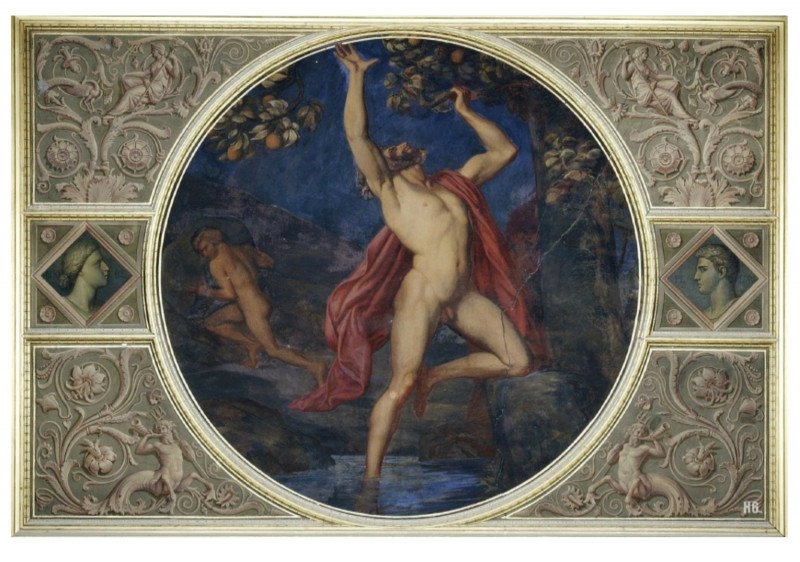Neoclassicism Art Style

This movement had a profound impact on the visual arts, architecture, and decorative arts of the time, and its influence can still be seen in contemporary art and design. In this article, we will explore the key elements of Neoclassicism and examine the works of some of its most famous artists.
Neoclassicism in Art: Revival of Antiquity
Neoclassicism was not just a revival of ancient styles, but also a reflection of the political and social climate of the time. The movement emerged during the Enlightenment, a period of intellectual and philosophical change that emphasized reason, science, and individual rights. Neoclassical artists sought to express these values through their work, often depicting heroic figures from ancient mythology or history to embody ideals of virtue, courage, and sacrifice.

Neoclassicism Characteristics
Neoclassicism in art is characterized by a revival of the classical styles and subjects of ancient Greece and Rome. Some of the key elements of Neoclassicism include:
- Emphasis on simplicity, clarity, and balance in composition;
- Use of classical motifs and subjects, such as mythological figures and historical events;
- Idealization of the human form, often depicted in heroic poses;
- Use of clear outlines and sharp contrasts to create a sense of order and structure;
- Attention to detail and precision in execution;
- Rejection of the ornate and decorative Rococo style that preceded it;
- Influence from archaeological discoveries and scholarly studies of ancient art and culture;
- Often associated with political and social ideals of the Enlightenment, such as reason, virtue, and civic duty.
Some of the most famous Neoclassical artists include Jacques-Louis David, Antonio Canova, and Jean-Auguste-Dominique Ingres, who are known for their grandiose historical paintings and sculptures that embody the ideals of the movement.
Neoclassicism Artists
Some of the most famous Neoclassical artists include Jacques-Louis David, Antonio Canova, and Jean-Auguste-Dominique Ingres. David's painting "Oath of the Horatii" is considered one of the masterpieces of the Neoclassical style, with its depiction of three Roman brothers swearing an oath of loyalty to their country. Canova's sculptures, such as "Perseus with the Head of Medusa," are known for their graceful lines and idealized forms. Ingres' paintings, such as "La Grande Odalisque," combine Neoclassical ideals with a sensuality that anticipates the Romantic movement.
Neoclassicism was a prominent art movement in the 18th and 19th centuries, characterized by a revival of classical Greek and Roman art, architecture, and culture. Many artists of the time were inspired by the ideals of the Enlightenment and sought to create works that reflected reason, order, and balance. Here are some of the most notable Neoclassical artists:
- Jacques-Louis David: Often considered the leader of the Neoclassical movement, David's works often depicted historical and mythological scenes with a focus on heroism and morality.
- Antonio Canova: An Italian sculptor known for his marble statues of mythological figures and historical personalities, such as Napoleon Bonaparte.
- Jean-Auguste-Dominique Ingres: A French painter who combined Neoclassical ideals with elements of Romanticism, often depicting elongated and graceful figures in his works.
- Angelica Kauffman: A Swiss-born painter who was one of the few female artists to achieve success in the Neoclassical movement, known for her portraits and historical scenes.
- Johann Joachim Winckelmann: Though not an artist himself, Winckelmann was a prominent art historian and critic whose writings on classical art and aesthetics greatly influenced the Neoclassical movement.
Other notable Neoclassical artists include François Gérard, John Flaxman, and Bertel Thorvaldsen.

Neoclassicism Time Period
Neoclassicism also had a significant impact on architecture, with architects such as Charles-Louis Clérisseau and Claude-Nicolas Ledoux designing buildings that embodied the principles of classical design. The movement influenced the development of Beaux-Arts architecture in the 19th century, which combined Neoclassical elements with Renaissance and Baroque styles.
Today, Neoclassicism continues to influence contemporary art and design, with many artists and designers looking to the past for inspiration. The movement's emphasis on simplicity, clarity, and order remains relevant in a world that often seems chaotic and overwhelming. As a result, Neoclassicism continues to be a source of inspiration for artists seeking to create works that embody timeless ideals of beauty and truth.
🎨 Read more about other art styles.
Popular Artists

Patricia Ariel
Artist

Jivko Sedlarski
Artist

Estela Del Valle Mañez
Artist

















